It’s been 20 years since the United States invaded Iraq but many still seem to be unsure about why exactly President George Bush made the decision. That’s because the Bush administration never had a meeting where all the pros and cons of overthrowing Saddam Hussein were discussed. That means scholars don’t even know when the president decided to go to war. Was it after 9/11? Was it in 2002 when the White House began its public relations campaign to convince the American public to go to war? Was it in 2003 after U.N. weapons inspectors failed to find any weapons of mass destruction? These issues have led to a wide range of books on the Iraq War. This is a review of some of the literature on the topic.
Three of the best books on the Iraq War are The Regime Change Consensus, Iraq In American Politics 1990-2003 by Joseph Stieb, Overreach, Delusions of Regime Change In Iraq by Michael MacDonald, and Wanting War: Why the Bush Administration Invaded Iraq Jeffrey Record.
Stieb believes that by the 2000s the American political establishment made up of Republicans, Neoconservatives and many Democrats all agreed on regime change in Iraq. After the Gulf War U.S. policy was containment of Iraq but that gradually fell apart. People argued that dictatorial regimes such as Saddam’s were an inherent threat to the world and would always want WMD. When the Iraqi internal opposition was crushed in the 1990s there was also no hope of Saddam being deposed under containment. That led all different groups within the U.S. to eventually decide upon war as the only solution to Iraq by the time Bush was elected president.
In Overreach MacDonald dealt with the ideology that led to the invasion of Iraq. Like Stieb, MacDonald found a general consensus amongst the American elite for taking on Iraq. That was based upon the idea that the U.S. was good for the world and that its ideas about democracy and capitalism were universal. That led many to believe that the Iraq War would be easy because Iraqis would embrace the U.S. and start building a democratic state and a free market economy on their own after Saddam was removed. That meant there was no reason to study Iraqi history or culture or even to plan much for postwar Iraq because it was supposed to take care of itself.
Wanting War discusses the main camps within the U.S. that advocated for war. One was Neoconservatives who had been pushing for the removal of Saddam since the Gulf War. They argued that the War on Terror should be about transforming the world starting with Iraq which could lead to the democratic transformation of the Middle East. The other group wanted America to exert its power after 9/11 and send a message to the world. Invading Afghanistan wasn’t considered enough and they wanted a much stronger show of force and that was Iraq. Together these two groups came up with the justification for war based upon WMD, Al Qaeda and Iraq’s defiance of the U.S.
Robert Draper’s To Start A War: How The Bush Administration Took America Into Iraq argues that the Iraq War was based upon faith. Bush believed in the universalism of America ideals like freedom and believed that dictators such as Saddam were opposed to them. He therefore assumed that Iraq was involved in 9/11 and would only accept information that reinforced that belief. The book then gives a good summary of all the arguments the White House made for war such as ties with Al Qaeda and WMD.
Another book dealing with the background ideas to the war is Rise Of The Vulcans, The History of Bush’s War Cabinet by James Mann. He writes that Dick Cheney, Donald Rumsfeld, Colin Powell, Condoleezza Rice, Paul Wolfowitz and Richard Armitage all believed in using the military to exert America’s power in the world. That meant the U.S. was going to respond to 9/11 by using force and once Iraq came up it was going to be war and nothing else. The debate within the White House was about the means to overthrow Saddam not whether it should happen. Mann’s work means the question of exactly when Bush decided to go to war with Iraq is irrelevant because the path had been set from the start.
Ron Suskind’s The One Percent Doctrine, Deep Inside America’s Pursuit Of Its Enemies Since 9/11 is mostly about the War on Terror but does make an important observation about the world view of the Bush administration. He wrote that the White House didn’t believe terrorists like Osama bin Laden were a real threat to a superpower like the United States. That meant after 9/11 it turned to what it knew which was states and Iraq rather than Al Qaeda. The administration wanted to make an example out of Iraq for any country that supported terrorism or wanted WMD because nations was what the U.S. knew and was comfortable dealing with.
Many authors jumped on Neoconservatives as the cause of the Iraq War. Francis Fukuyama who was a Neoconservative wrote America at the Crossroads, Democracy, Power, and the Neoconservative Legacy that went through the main ideas of the group. That consisted of regime change, unilateralism, pre-emptive wars, benevolent hegemony, spreading democracy, avoiding social engineering and American exceptionalism. Fukuyama lays out a history of neoconservatism and then how it contributed to the Iraq War such as the 2002 National Security Strategy including preemption. The Bush administration argued that Saddam could not be deterred and therefore the U.S. had to act before he did which came from Neoconservatism.
Two other books on the subject were The Assassin’s Gate, America In Iraq by George Packer and The Road to Iraq, The Making of a Neoconservative War by Ahmad Mohammed Idrees. Packer talked with Iraqi exile and Iraqi National Congress member Kanan Makiya who thought Iraq was a middle class country that would embrace the ideas of the Enlightenment and form a liberal democratic order after Saddam. His ideas were echoed by the Neoconservatives who believed U.S. military power should be used to spread democracy around the world. Idrees argued that Neoconservatives had institutional power in the U.S. through think tanks, lobby groups, media outlets and members in the Bush administration and used that to push the U.S. to war. Surprisingly he said that Neoconservatism wasn’t based upon an ideology, which was wrong.
These books explain the role of Neoconservatives and how they set the groundwork for the Iraq invasion. The problem is they were not the only ones advocating for removing Saddam Hussein so they only tell part of the picture.
Two others that tried to dig a bit deeper were The Bush Administrations and Saddam Hussein, Deciding on Conflict by Alex Roberto Hybel and Justin Matthew Kaufman and Leap of Faith, Hubris, Negligence, and America’s Greatest Foreign Policy Tragedy by Michael Mazarr. Hybel and Kaufman believed that the Bush administration fell into group think about Iraq. The White House saw the world in black and white and rejected any alternatives to going to war. The U.S. decided on invasion without any real discussion about the pros and cons. Mazarr on the other hand tried but in the end failed to give a satisfactory explanation for why Bush chose war. He mentioned that the government believed in American exceptionalism and that it did good in the world. Thus it thought it could end terrorism with the Iraq War. That definitely played a role but alone cannot explain why the U.S. chose Saddam over all the other nations. Leap of Faith is one of the most in depth histories of the events leading up to the war and its aftermath but is still lacking on the bigger picture.
Unfortunately the vast majority of books on the 2003 invasion are simply histories with little to no analysis.
The three Bob Woodward books, Bush At War, Plan of Attack: The Definitive Account Of The Decision To Invade Iraq, and State of Denial, Bush At War, Part III, are probably the best known in this category. All three are insider accounts of the Bush White House as Woodward relied extensively upon government officials. Bush At War is about how Iraqi immediately came up on 9/11, but no reason is given for why. Plan of Attack goes into the decision making behind going to war and argues that the administration didn’t adequately prepare because it focused upon removing Saddam and not what would come afterward. Finally, State of Denial dealt with how planning for Iraq failed. All three are histories with no insights into why Iraq was chosen.
Scott McClellan, who was the White House spokesman wrote What Happened, Inside the Bush White House and Washington’s Culture of Deception. He said that the Bush wanted to create a democracy in Iraq and transform the Middle East. McClellan mostly focuses upon how the invasion was justified to the American public and notes how there was no debate whether the decision was right or wrong within the administration. Similarly Michael Gordon and General Bernard Trainor in The Endgame, The Inside Story of the Struggle for Iraq, from George W. Bush to Barack Obama also mentions that the president wanted to change the Middle East by spreading democracy, but mostly focuses upon U.S. planning. Peter Baker’s Days Of Fire, Bush and Cheney in the White House also focuses upon how the administration prepared for war and argues that Bush mismanaged things because he delegated authority to his subordinates and backed whatever they came up with even if that contradicted something he already approved.
There are some other insider accounts like McClellan’s including Richard Clarke’s Against All Enemies, Inside America’s War on Terror, Ron Suskind’s The Price of Loyalty, and Gregory Hooker’s Shaping the Plan for Operation Iraqi Freedom, The Role of Military Intelligence Assessments. Clarke was in charge of anti-terrorism under Bush and noted that Iraq was on the mind of the administration from day one. On 9/11 Defense Secretary Donald Rumsfeld, his deputy Paul Wolfowitz and most importantly the president all talked about striking Iraq and asked whether it was involved with Osama bin Laden. Suskind wrote about Bush’s Treasury Secretary Paul O’Neill who also said that Iraq was the first order of business when it came to foreign policy. Saddam was brought up in the first two meetings of the National Security Council under Bush but no decision was made. It wasn’t until 9/11 that the idea was spawned to take out the Iraqi dictator. Finally, Hooker was a U.S. military intelligence analyst at Central Command. He argued Rumsfeld hindered war planning by making constant demands for a smaller force and quicker build-up. He also claimed that many requests by the Pentagon were unrealistic coming from civilians who knew nothing about military operations.
Other histories include The United States and Iraq Since 1990, A Brief History With Documents by Robert Brigham which is a short college textbook with primary sources charting the U.S.-Iraq relationship from the Gulf War to 2003. It’s meant to show that the Bush White House considered Iraq unfinished business from the Gulf War. State of War, The Secret History of the CIA and the Bush Administration by James Risen is mostly about the War on Terror but includes Iraq claiming the Neoconservatives were the driving force behind the invasion. It does get caught up in the battle over WMD and Iraq-Al Qaeda ties. Fiasco: The American Military Adventure In Iraq by Thomas Ricks blamed Bush, the military and Congress for the war because they believed in false claims about Baghdad and never adequately planned for the post-war situation. Losing Iraq, Inside The Post War Reconstruction Fiasco by former State Department official David Phillips breaks down the White House into three factions on Iraq, the Neoconservatives who wanted to change the Middle East, the Hegemonists who wanted to use military power to deal with threats and the Internationalists who wanted to build a coalition to support the war. This led to divisions, which were never resolved.
There are also many flawed books about Iraq.
John Ballard in from storm to Freedom, America’s Long War with Iraq tried to trace the 2003 invasion back to the Gulf War. He notes that Iraq and the U.S. completely misinterpreted each other which led to years of animosity. His problem was he was a military historian and completely missed the politics involved. Michael Isikoff and David Corn’s Hubris, The Inside Story of Spin, Scandal, And The Selling Of The Iraq War wrote that the administration as set on war at the start and therefore never debated the evidence and intelligence against Iraq. They were simply justifications not the cause. The problem is that the authors get lost in the false story that Iraq tried to buy uranium from Niger and how that led the White House to discredit former U.S. Ambassador Joseph Wilson and his wife Valeri Plame who worked in the CIA on WMD. Todd Purdum in A Time Of Our Choosing, America’s War In Iraq went through the different personalities within the White House and their ideas such as Wolfowitz who believed in promoting democracy and Cheney who wanted the U.S. to assert its power after 9/11. The author however never talks about Bush who actually made the decision to go to war.
Finally, there are the books that were just plain bad. James Bamford’s A Pretext for War, 9/11, Iraq, and the Abuse of America’s Intelligence Agencies for instance got almost all the facts wrong. He claimed that Bush hated Saddam because he tried to assassinate his father in 1993. He then blamed the Neoconservatives for the war but wrote about people like Richard Perle who was on the Defense Intelligence Board and Undersecretary of Defense Douglas Feith who had little to no contact with the president. By far one of the worst is Feith’s War and Decision, Inside The Pentagon At The Dawn Of The War On Terrorism. He tried to justify the invasion based upon what was known by 2008 when the administration’s case had been thoroughly disproven. For instance, he wrote that Al Qaeda was never a threat to the U.S. and that Iraq’s ties to the terrorist group was never the major reason for war yet it was mentioned again and again by Bush and others not to mention Feith’s office wrote a report on how the two had an active relationship which was not true. He also said that Iraq having stockpiles of WMD was not the problem but that Iraq could make the weapons in the future and that was a legitimate cause for war. He tries to twist things around so much that the book becomes a joke.
If you’d like to read more here are links to Musings On Iraq’s reviews of all of the books mentioned in the article.
Against All Enemies, Inside America’s War on Terror by Richard Clarke
America at the Crossroads, Democracy, Power, and the Neoconservative Legacy by Francis Fukuyama
The Assassins’ Gate, America In Iraq by George Packer
The Bush Administrations and Saddam Hussein, Deciding On Conflict by Alex Roberto Hybel and Justin Matthew Kaufman
Bush At War by Bob Woodward
Days Of Fire, Bush and Cheney in the White House by Peter Baker
The Endgame, the Inside Story of the Struggle for Iraq, from George W. Bush to Barack Obama by Michael Gordon and General Bernard Trainor
Fiasco: The American Military Adventure In Iraq by Thomas Ricks
from storm to Freedom, America’s Long War with Iraq by John Ballard
Hubris, The Inside Story of Spin, Scandal, And The Selling Of The Iraq War by Michael Isikoff and David Corn
Leap of Faith, Hubris, Negligence, and America’s Greatest Foreign Policy Tragedy by Michael Mazarr
Losing Iraq, Inside The Post War Reconstruction Fiasco by David Phillips
The One Percent Doctrine, Deep Inside America’s Pursuit Of Its Enemies Since 9/11 by Ron Suskind
Overreach, Delusions of Regime Change In Iraq by Michael MacDonald
Plan of Attack: The Definitive Account Of The Decision To Invade Iraq by Bob Woodward
A Pretext for War, 9/11, Iraq, and the Abuse of America’s Intelligence Agencies by James Bamford
The Price of Loyalty by Ron Suskind
The Regime Change Consensus, Iraq In American Politics 1990-2003 by Joseph Stieb
Rise Of The Vulcans, The History of Bush’s War Cabinet by James Mann
The Road to Iraq, The Making of a Neoconservative War by Muhammad Idrees Ahmad
Shaping the Plan for Operation Iraqi Freedom, The Role of Military Intelligence Assessments by Gregory Hooker
To Start A War: How The Bush Administration Took America Into Iraq by Robert Draper
State of Denial, Bush At War, Part III by Bob Woodward
State of War, The Secret History of the CIA and the Bush Administration by James Risen
A Time Of Our Choosing, America’s War In Iraq by Todd Purdum
The United States And Iraq Since 1990, A Brief History With Documents by Robert Brigham
Wanting War: Why the Bush Administration Invaded Iraq by Jeffrey Record
War and Decision, Inside The Pentagon At The Dawn Of The War On Terrorism by Douglas Feith
What Happened, Inside the Bush White House and Washington’s Culture of Deception by Scott McClellan



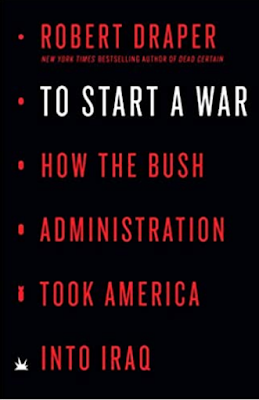
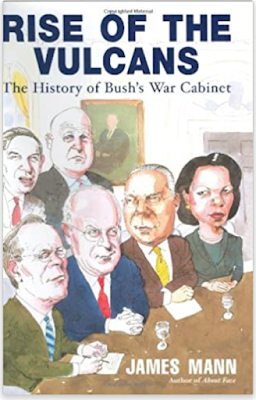
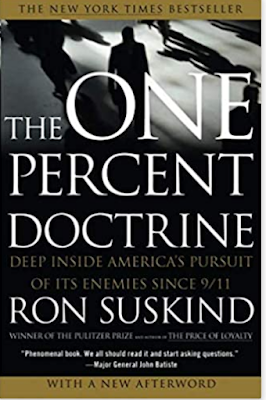
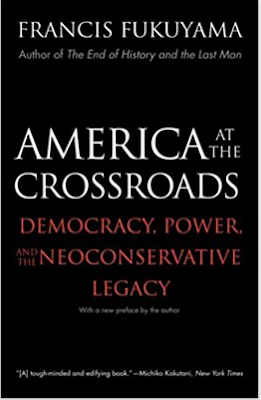





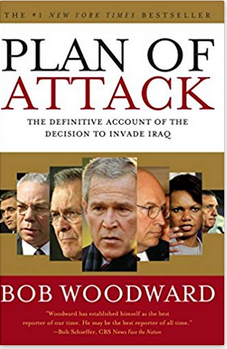




















No comments:
Post a Comment